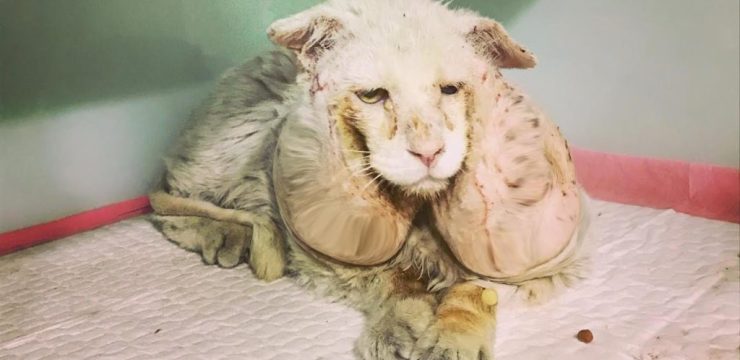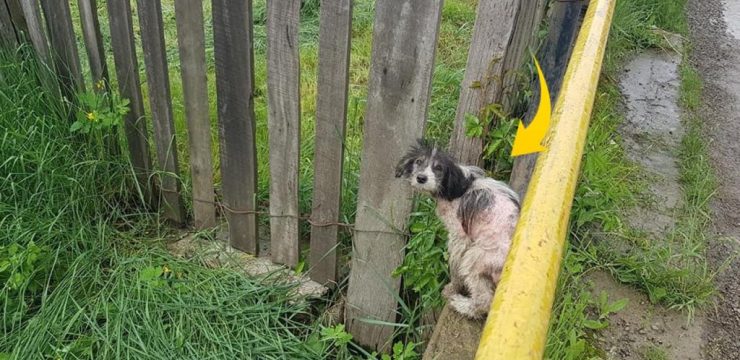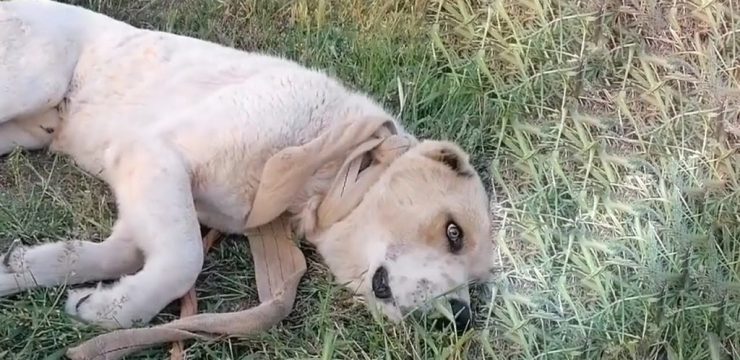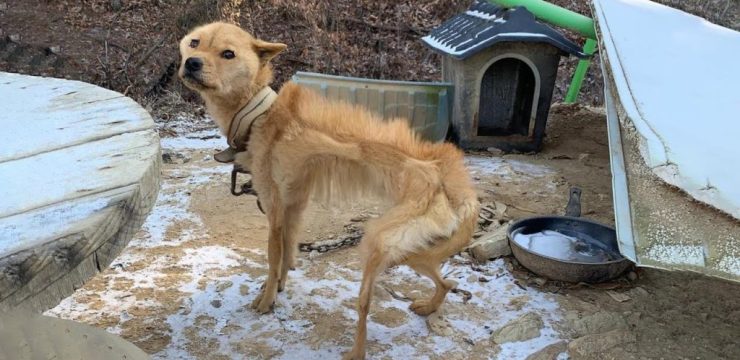It was the kind of neighborhood that once felt like a community. The streets were narrow and shaded by old oak trees, and you could always hear the hum of everyday life—children laughing as they pedaled home from school, neighbors exchanging small talk by their mailboxes, and dogs barking behind wooden fences. It was peaceful, familiar, and safe—or so everyone thought. But behind one rusted chain-link fence, a quiet danger had been growing for far too long, ignored until it was too late.
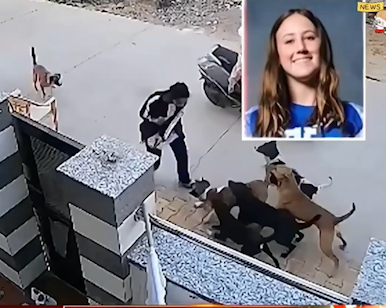
The lot sat abandoned for years, a patch of wildness swallowed by weeds and broken glass. It had become a forgotten corner of the city, a place people walked past without a second thought. In daylight, it looked harmless—just another piece of land time had left behind. But when the sun went down, eerie howls drifted through the quiet streets. They echoed off the houses and slipped through bedroom windows, unsettling anyone still awake. It was the sound of a problem nobody wanted to face: a pack of stray dogs that had turned the lot into their home.
For months—maybe even years—neighbors whispered about them. Some said they had seen the dogs rummaging through trash cans; others swore they chased cyclists or barked at schoolchildren. But most people brushed it off. They made a few phone calls to animal control, then shrugged when nothing happened. “They’ll come eventually,” they told each other. And so, life went on—until the day it didn’t.
It was a warm afternoon, bright and ordinary, when everything changed. School had just let out, and children were heading home in clusters, their laughter filling the air. Among them was Amara*, a fifteen-year-old girl who loved art and dreamed of becoming a designer someday. Her teachers called her gifted; her friends said she was the kind of person who could make anyone feel welcome. She was just a few blocks from home when it happened.
No one saw how it began—only how it ended. Witnesses later said they heard the barking first, then the terrified screams that shattered the quiet afternoon. Doors flew open, curtains shifted, and people rushed outside, but by the time they reached the scene, the horror had already unfolded. Sirens wailed through the neighborhood as emergency crews arrived, but there was nothing they could do. The news spread in moments, leaving the entire community frozen in disbelief.
People gathered near the fence, staring in silence as flashing red and blue lights illuminated the old lot. Some wept openly; others held their children close. It was the nightmare they had all quietly feared but never thought would come true. And the worst part was knowing it could have been prevented.
Grief turned quickly into anger. Within hours, residents began gathering at the site, transforming it into a makeshift memorial. They left candles, flowers, drawings, and handwritten notes. Someone placed a stuffed bear against the fence, now covered in yellow tape. Every item left behind was an apology—an unspoken message saying, “We should have done more.”
City officials responded swiftly, but for many, it felt far too late. They promised an investigation, more patrols, and immediate efforts to capture the stray dogs. But the neighborhood wanted accountability. How could so many warnings go unanswered? How had something so tragic been allowed to happen when people had been calling for help for so long?
Soon, residents began sharing their stories online—photos, videos, and old reports showing that this problem had been festering long before tragedy struck. The posts spread fast, catching the attention of local news outlets and even national media. It became clear that Amara’s death wasn’t a random event—it was the heartbreaking consequence of years of inaction.
Experts explained that stray animals are not naturally aggressive, but hunger, fear, and neglect can make even gentle creatures desperate. “It’s not the dogs’ fault,” one local veterinarian said quietly. “It’s the fault of a system that failed both the animals and the people.” The dogs had been seen many times before—skinny, trembling, and hungry. They weren’t monsters; they were victims of abandonment. What happened that day was the inevitable result of too many ignored warnings.
Now, the neighborhood struggles to heal. The streets that once felt so safe now feel shadowed by fear. Parents no longer let their children walk alone. Runners carry sticks or avoid certain routes altogether. Even the sound of a distant bark makes hearts race. “It’s not just sadness,” one neighbor said softly. “It’s guilt. We all feel it. We all knew.”
Still, there are signs of hope. Local animal advocates have stepped forward, calling for change. They want humane but effective animal control measures, more funding for shelters, and faster response times when citizens call for help. Volunteers have organized to care for stray animals, determined to prevent future suffering.
Amara’s mother, speaking through tears, asked the public not to let her daughter’s death fade into another forgotten headline. “If her story means anything,” she said, “let it mean no other child will die because we stayed silent.” Her words touched the nation—a mother’s plea for compassion and action.
The abandoned lot has now become a symbol. The rusted fence still stands, wrapped in ribbons and covered with notes that say things like “Never Again.” The city has begun cleaning it up, installing lights and clearing the weeds. But for many residents, it’s not just about fixing a place—it’s about fixing a pattern of neglect that runs deeper than one street corner.
Sometimes, Amara’s friends return there, leaving fresh flowers or drawings of sunsets—the kind she loved to sketch. They say it helps them remember her not just as a victim, but as a kind, creative soul who saw beauty in everything. That memory fuels their hope that something good can grow from the pain.
Because this wasn’t just an accident—it was a warning written in heartbreak. It’s a reminder that ignoring problems doesn’t make them disappear; it allows them to grow until they destroy something precious. Neglect has consequences, and silence always comes with a cost.
Today, most of the stray dogs have been rescued and placed in shelters, where they’re finally safe. The lot, once filled with fear and sorrow, now carries a quiet message: that awareness and compassion can save lives. The howls that once echoed through the night have faded, replaced by the voices of a community determined to speak up, to care, and to never again let tragedy be the result of silence.
Amara’s neighborhood will never be what it once was—but maybe, in time, it can become something better. A place that listens, protects, and learns from its mistakes. A place that remembers her not just with tears, but with change.

